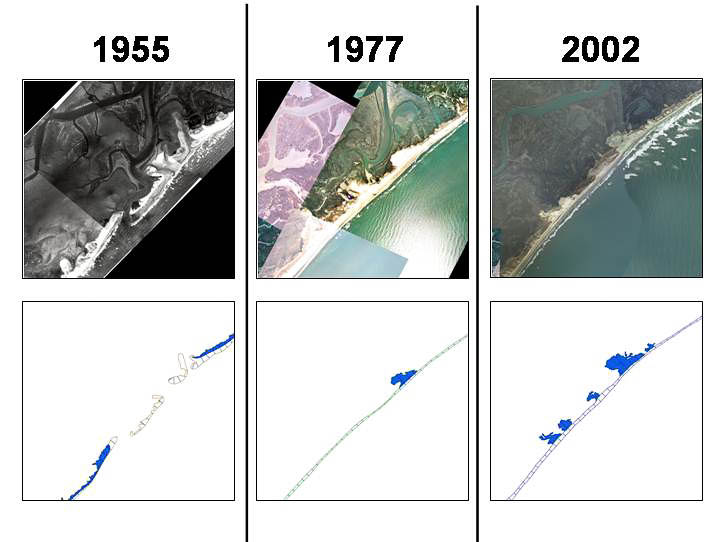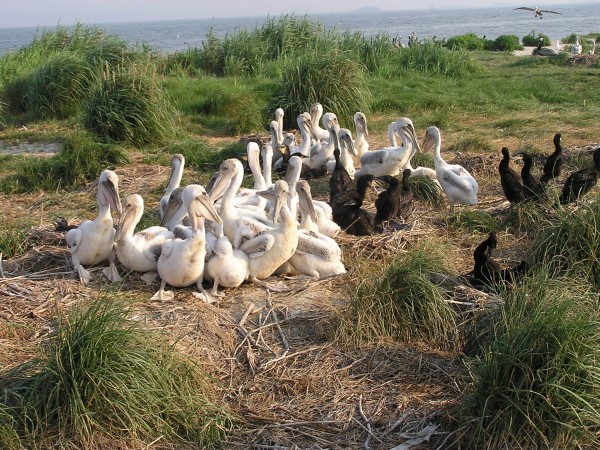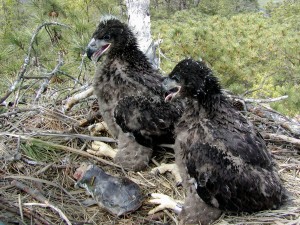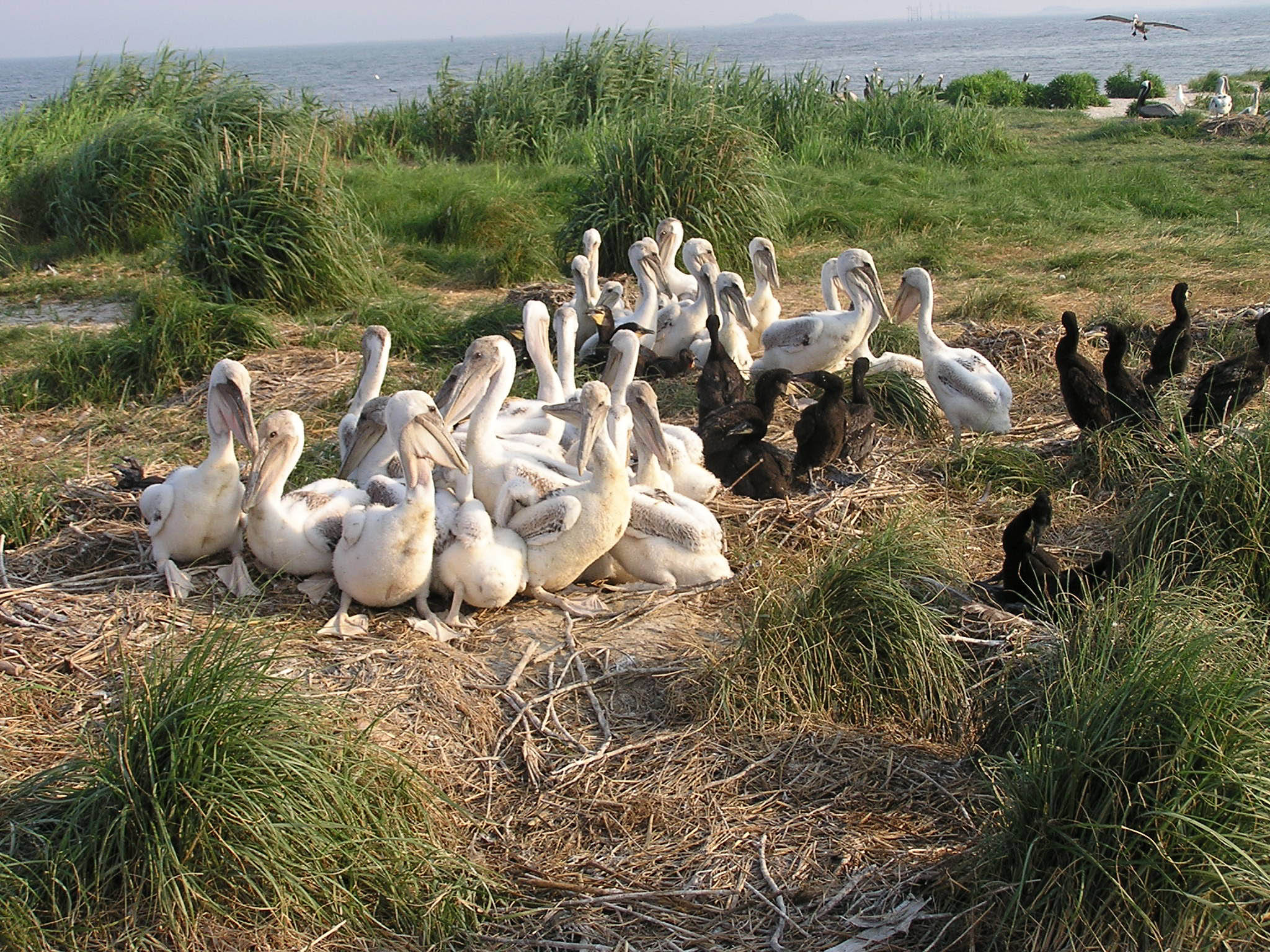Estimating fish demand by waterbirds in the Chesapeake Bay
Red knot stopover ecology on Va’s Barrier Islands
June 17, 2008
Landscape dynamics along Virginia's barrier islands: Assessing habitat stability for disturbance-prone species
October 2, 2008
Written by Bryan Watts
October 1, 2008

Osprey chicks in a nest on the York River – The growth of the osprey population in the upper reaches of Chesapeake Bay tributaries is placing additional demands on fish stocks in these areas. Photo by Andy Glass.
The Chesapeake Bay is one of the most productive aquatic ecosystems in the world and has played an important role in commercial fisheries for the past 200 years. Currently, the Bay supports the largest commercial fishery along the Atlantic Coast, producing 300,000 to 500,000 metric tons of Atlantic menhaden per year. In addition to the commercial value of this fishery, the Bay’s productivity is critical to many fish-eating birds. Despite the fact that many waterbird populations within the Bay have increased exponentially in recent years, birds have never been included in harvest models for fish in the Chesapeake Bay.

Several species of “bait” fish play a big role in the diet of fish-eating birds and in the broader food web of the Bay. Photo by Bryan Watts.
CCB researchers used a bioenergetics approach to estimate the amount of fish biomass consumed by breeding piscivorous birds within the tidal reach of the Chesapeake Bay. This approach combined a multi-stage population model with a breeding model and applied allometric relationships between field metabolism and body mass to estimate annual demand across years and daily demand within years. Species-specific models were created for bald eagles, osprey, great blue herons, double-crested cormorants, and brown pelicans.

Brown pelican and double-crested cormorant chicks on Smith Island in the Virginia barrier island chain. The rapid growth and large biomass of chicks, plus large colonies, lead to large local fish demands during the nesting season. Photo by Bryan Watts.
Bay-wide survey data were used to parameterize the population model and 28 general, nesting, feeding, and demographic parameters were used to develop the breeding models. Foraging ranges were used along with a GIS layer of breeding locations to develop a spatially-explicit map of fish demand for osprey and bald eagles.

Bald eagle chicks with catfish in nest on York River – The bald eagle population and associated metabolic demand within the Chesapeake Bay has been growing at a rate of nearly 10% per year. Photo by Bryan Watts.
Estimated fish consumption by the 5 populations examined increased exponentially from 1,588,084 to 16,014,634 kg (35 million pounds) with an average doubling time of 9.0 years between 1975 and 2005. This reflects the exponential growth in these populations and the recent colonization of the Bay by double-crested cormorants and brown pelicans. Due to their large population size, Great Blue Herons consumed the greatest biomass followed by double-crested cormorants, brown pelicans, bald eagles, and osprey. Fish demand is governed by both the size of the population and the length of residency in the Bay. Brown pelicans and double-crested cormorants did not occur in the Chesapeake Bay historically, but have become significant fish consumers in a relatively short period of time. Estimated seasonal fish consumption reached a peak in July around the time when young of most species are fledging.




